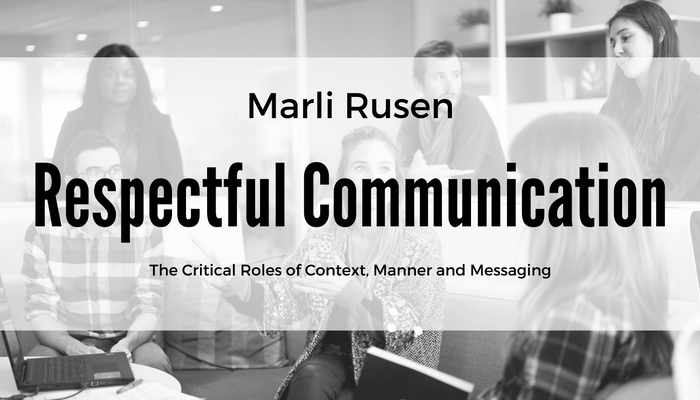Resources > Blog > Respectful Communication – The Critical Roles of Context, Manner and Messaging

Often, when I review complaints of harassment/bullying, those accused of communicating disrespectfully will say “But I didn’t say a THING” or “I haven’t talked to that person in weeks!” or “All I said was this – and there’s nothing wrong with saying that”.
A proper (and lawful) understanding of workplace disrespect requires us to consider both the words that are spoken and the way in which they are said and delivered. Apparently “neutral” words (such as “girl”, “easy” or “baby”) may be completely inappropriate if used in a particular context (for example calling a male coworker a “girl” to infer that he is somehow inferior to his male colleagues).
Even neutral terms, that appear appropriate on their face, may constitute disrespect/bullying if they are accompanied by disrespectful non-verbal language. Saying “fine” is not an issue – saying “fine” loudly or sarcastically, perhaps while sighing loudly and rolling one’s eyes – is a concern. Interestingly, in my professional practice (and personal experience), non-verbal disrespect often haunts and hurts us far more than verbal communication itself. How many times have we turned to a colleague or friend and said “It’s not what they said that upset me – it was the way they said it”.
Finally, disrespectful communication often includes no communication at all. Shunning, avoidance, stonewalling, “freezing out” others, purposely not responding to requests for information/assistance – all of this “non-communication” does not involve any words at all – but is usually the most damaging disrespect out there.
When choosing to speak (or not), it is critical to consider how we speak to and about others, considering every type of communication at our disposal – verbal, written, non-verbal and no communication at all. Each type of communication has the potential to build up or tear down workplace relationships and trust – one conversation at a time.
Learn more about building workplace relationships and trust with Marli’s book “The MIRROR METHOD: How to build productive teams by ending workplace dysfunction.“
